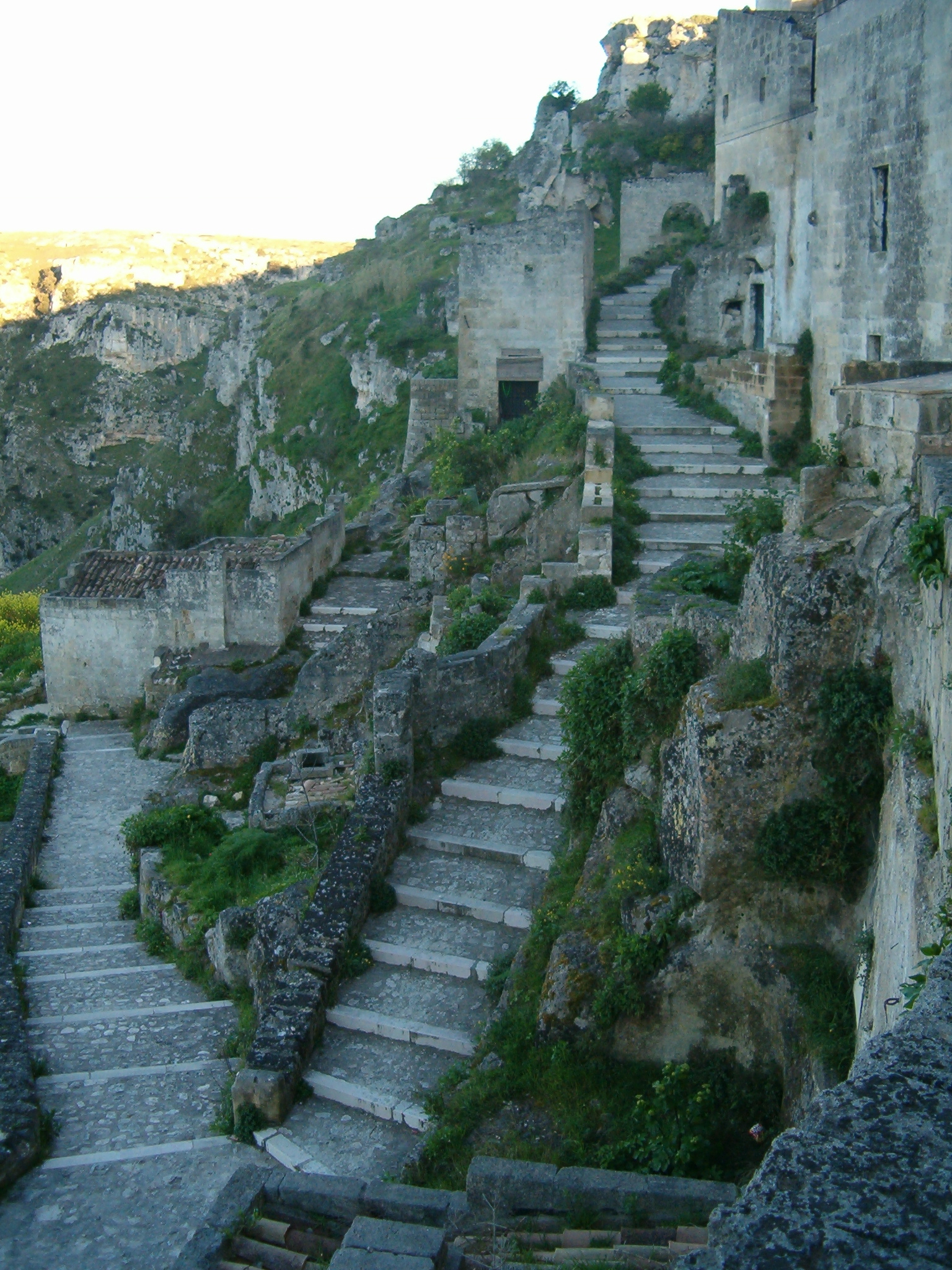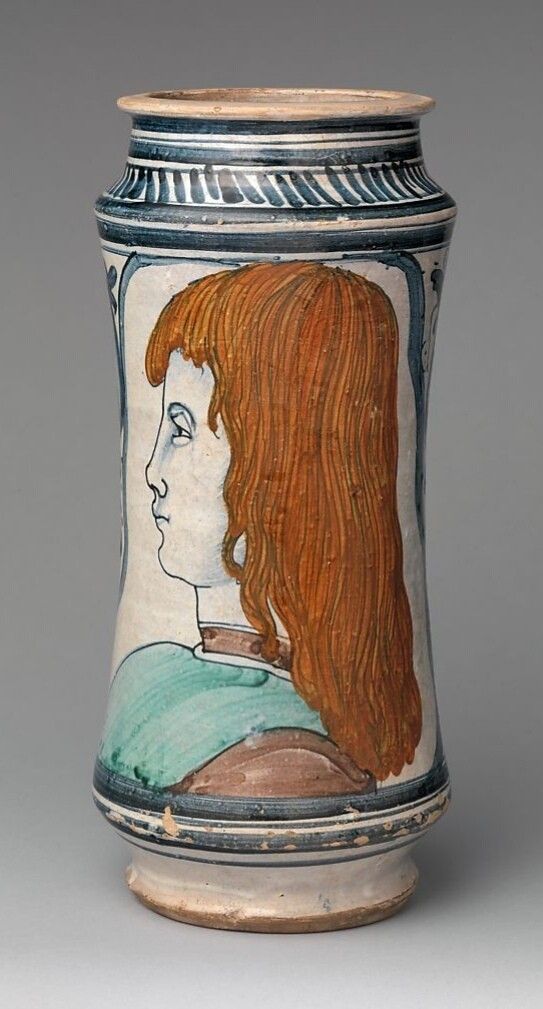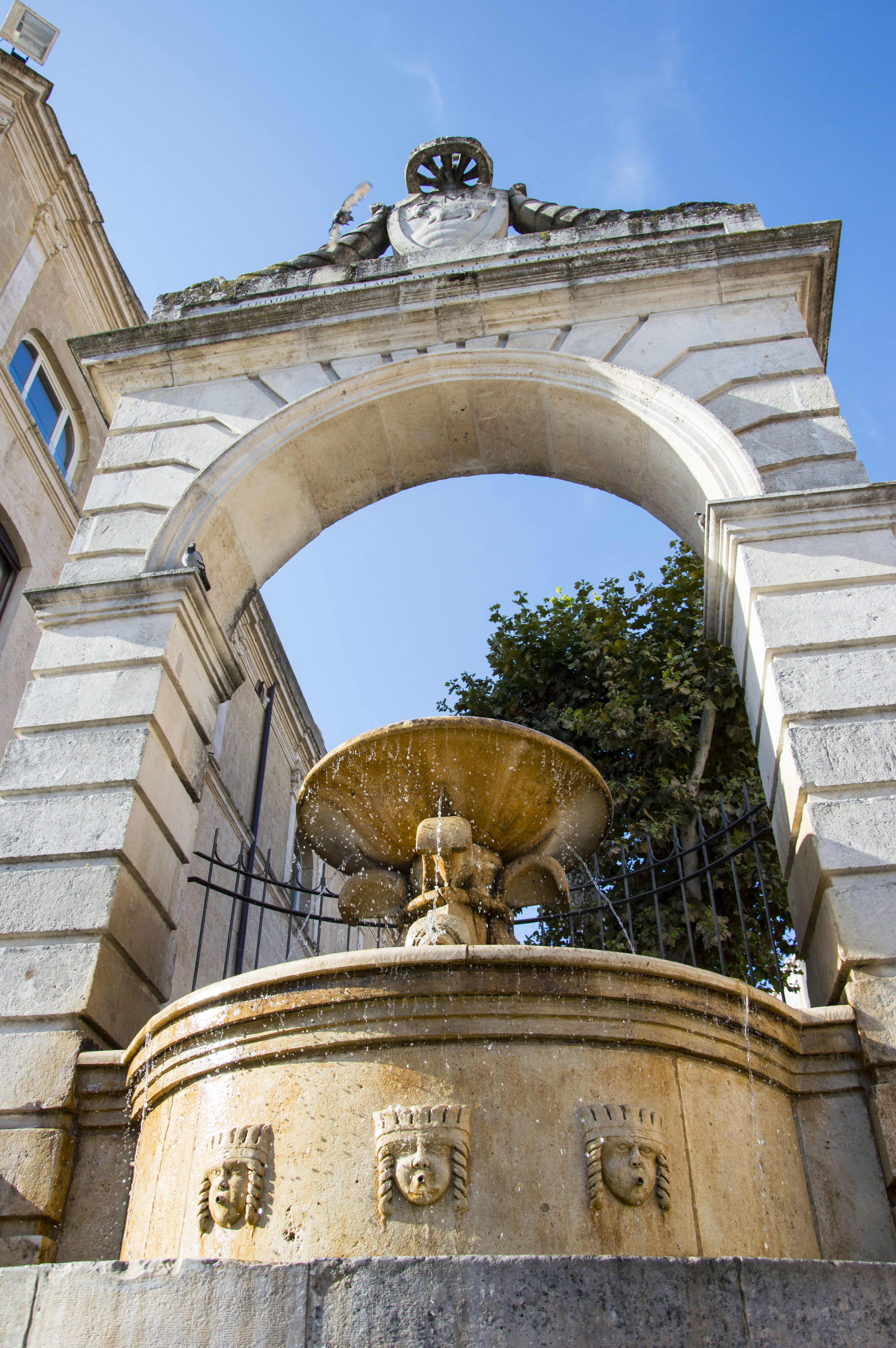|
Castello Tramontano
Castello Tramontano is a 16th-century fortification in Matera, that was built to control the local population. Castello Tramontano is situated on Lapellio Hill, above the historical city of Matera with in the Basilicata Administrative Region. The city has been used many times as a set to represent the Holy land in film inculding Pier Paolo Pasolini’s "The Gospel According to St. Matthew" and Mel Gibson's " The Passion of the Christ" History The Castello was constructed in Aragonese style, with a taller central tower and two lower side towers, both round, crenellated, and equipped with loops. Construction began in 1501 by Giovanni Carlo Tramontano, Count of Matera. The king of Naples, Ferdinand II, had promised the Materrani people that he would not give the city to any more feudal lords after Matera had already freed itself several times from the feudal yoke by paying various ransoms to remain a free city. Recognition of such a status is directly dependent on the Cro ... [...More Info...] [...Related Items...] OR: [Wikipedia] [Google] [Baidu] |
Italy
Italy ( it, Italia ), officially the Italian Republic, ) or the Republic of Italy, is a country in Southern Europe. It is located in the middle of the Mediterranean Sea, and its territory largely coincides with the homonymous geographical region. Italy is also considered part of Western Europe, and shares land borders with France, Switzerland, Austria, Slovenia and the enclaved microstates of Vatican City and San Marino. It has a territorial exclave in Switzerland, Campione. Italy covers an area of , with a population of over 60 million. It is the third-most populous member state of the European Union, the sixth-most populous country in Europe, and the tenth-largest country in the continent by land area. Italy's capital and largest city is Rome. Italy was the native place of many civilizations such as the Italic peoples and the Etruscans, while due to its central geographic location in Southern Europe and the Mediterranean, the country has also historically been home ... [...More Info...] [...Related Items...] OR: [Wikipedia] [Google] [Baidu] |
Giovanni Carlo Tramontano, Count Of Matera
Giovanni Carlo Tramontano, Baron of Sorrento, Count of Matera (born in 1451 as Giovanni Carlo Tramontano, Baron of Sorrento, died in 1514) was an Italian nobleman who belonged to the ancient feudal noble family of the barons of the House of Tramontano. The Baron of Sorrento was often called "Giancarlo" or "Gian Carlo", short for Giovanni Carlo. Count of Matera The Baron Giovanni Carlo Tramontano of Sorrento was on October 1, 1497, given the city of Matera in the Southern Italy region of Basilicata as his county by the King in Naples, Ferdinand II of Aragon. Giancarlo Baron Tramontano was given the title ''Count of Matera'' and built the famous ''Castello Tramontano'' ("Castle Tramontano"). A visit in Naples After 9 years as the ruler of Matera the Count almost lost his power in 1506. King Ferdinand II did announce on October 9, 1506, that he intended to remove counties and baronies from several counts and barons in the kingdom because he wanted to give them to a group of Spanis ... [...More Info...] [...Related Items...] OR: [Wikipedia] [Google] [Baidu] |
Matera, Italy
Matera (, ; Materano: ) is a city in the region of Basilicata, in Southern Italy. As the capital of the province of Matera, its original settlement lies in two canyons carved by the Gravina River. This area, the Sassi di Matera, is a complex of cave dwellings carved into the ancient river canyon. Over the course of its history, Matera has been occupied by Romans, Longobards, Byzantines, Saracens, Swabians, Angevins, Aragonese, and Bourbons. By the late 1800s, Matera's cave dwellings became noted for intractable poverty, poor sanitation, meager working conditions, and rampant disease. Evacuated in 1952, the population was relocated to modern housing, and the Sassi (Italian for "stones") lay abandoned until the 1980s. Renewed vision and investment led to the cave dwellings becoming a noted historic tourism destination, with hotels, small museums and restaurants – and a vibrant arts community. Known as ("the underground city"), the Sassi and the park of the Rupestrian Chur ... [...More Info...] [...Related Items...] OR: [Wikipedia] [Google] [Baidu] |
Tufa
Tufa is a variety of limestone formed when carbonate minerals precipitate out of water in unheated rivers or lakes. Geothermally heated hot springs sometimes produce similar (but less porous) carbonate deposits, which are known as travertine. Tufa is sometimes referred to as (meteogene) travertine. It should not be confused with hot spring (thermogene) travertine. Tufa, which is calcareous, should also not be confused with tuff, a porous volcanic rock with a similar etymology that is sometimes also called "tufa". Classification and features Modern and fossil tufa deposits abound with wetland plants; as such, many tufa deposits are characterised by their large macrobiological component, and are highly porous. Tufa forms either in fluvial channels or in lacustrine environments. Ford and Pedley (1996) provide a review of tufa systems worldwide. Fluvial deposits Deposits can be classified by their depositional environment (or otherwise by vegetation or petrographically). Pedle ... [...More Info...] [...Related Items...] OR: [Wikipedia] [Google] [Baidu] |
Moat
A moat is a deep, broad ditch, either dry or filled with water, that is dug and surrounds a castle, fortification, building or town, historically to provide it with a preliminary line of defence. In some places moats evolved into more extensive water defences, including natural or artificial lakes, dams and sluices. In older fortifications, such as hillforts, they are usually referred to simply as ditches, although the function is similar. In later periods, moats or water defences may be largely ornamental. They could also act as a sewer. Historical use Ancient Some of the earliest evidence of moats has been uncovered around ancient Egyptian castles. One example is at Buhen, a castle excavated in Nubia. Other evidence of ancient moats is found in the ruins of Babylon, and in reliefs from ancient Egypt, Assyria, and other cultures in the region. Evidence of early moats around settlements has been discovered in many archaeological sites throughout Southeast Asia, including ... [...More Info...] [...Related Items...] OR: [Wikipedia] [Google] [Baidu] |
Matera Cathedral
Matera Cathedral ( it, Duomo di Matera; Cattedrale di Santa Maria della Bruna e di Sant'Eustachio) is a Roman Catholic cathedral in Matera, Basilicata, Italy. It is dedicated to the Virgin Mary under the designation of the Madonna della Bruna and to Saint Eustace. Formerly the seat of the Bishops, later Archbishops, of Matera, it is now the cathedral of the Archdiocese of Matera-Irsina. History The cathedral was built in Apulian Romanesque style in the 13th century on the ridge that forms the highest point of the city of Matera and divides the two ''Sassi'', on the site of the ancient Church of Saint Eustace, protector of the city. Construction began in 1203, the year in which Pope Innocent III raised Matera to the rank of an archdiocese in union with Acerenza as the Archdiocese of Acerenza and Matera, and was completed in 1270. The original dedication was to Santa Maria di Matera, as recorded in a contemporary notarial document. Then, on the evidence of a will of 1318, it wa ... [...More Info...] [...Related Items...] OR: [Wikipedia] [Google] [Baidu] |
Ferdinand II Of Naples
Ferdinando Trastámara d'Aragona, of the branch of Naples, known to contemporaries especially with the name of Ferrandino (Naples, 26 June 1467 - Naples, 7 October 1496). Acclaimed "the first among all the Kings and Lords of the World" and universally praised for his excellent virtues was King of Naples for just under two years, from 23 January 1495 to 7 October 1496. Prince of Capua from birth until 25 January 1494 and Duke of Calabria from 25 January 1494 to 23 January 1495 as heir to the throne. A valiant prince, magnanimous, forgiving, and truly endowed with every good disposition of the soul as well as of the body, he demonstrated, in the few years he lived, great audacity and high military valor, as well as rare political acumen. Since adolescence he lent his sword for the defense of the kingdom, which among a thousand dangers due to the nefarious politics of his father, had been lost. For it, as an extreme sacrifice, he finally gave his life: exhausted by the many battles, ... [...More Info...] [...Related Items...] OR: [Wikipedia] [Google] [Baidu] |
Naples
Naples (; it, Napoli ; nap, Napule ), from grc, Νεάπολις, Neápolis, lit=new city. is the regional capital of Campania and the third-largest city of Italy, after Rome and Milan, with a population of 909,048 within the city's administrative limits as of 2022. Its province-level municipality is the third-most populous metropolitan city in Italy with a population of 3,115,320 residents, and its metropolitan area stretches beyond the boundaries of the city wall for approximately 20 miles. Founded by Greeks in the first millennium BC, Naples is one of the oldest continuously inhabited urban areas in the world. In the eighth century BC, a colony known as Parthenope ( grc, Παρθενόπη) was established on the Pizzofalcone hill. In the sixth century BC, it was refounded as Neápolis. The city was an important part of Magna Graecia, played a major role in the merging of Greek and Roman society, and was a significant cultural centre under the Romans. Naples served a ... [...More Info...] [...Related Items...] OR: [Wikipedia] [Google] [Baidu] |
Arrowslit
An arrowslit (often also referred to as an arrow loop, loophole or loop hole, and sometimes a balistraria) is a narrow vertical aperture in a fortification through which an archer can launch arrows or a crossbowman can launch bolts. The interior walls behind an arrow loop are often cut away at an oblique angle so that the archer has a wide field of view and field of fire. Arrow slits come in a variety of forms. A common one is the cross, accommodating the use of both the longbow and the crossbow. The narrow vertical aperture permits the archer large degrees of freedom to vary the elevation and direction of their bowshot, but makes it difficult for attackers to harm the archer since there is only a small target at which to aim. Balistraria, plural balistrariae, from balister, crossbowman can often be found in the curtain walls of medieval battlements beneath the crenellations. History The invention of the arrowslit is attributed to Archimedes during the siege of Syracuse in 2 ... [...More Info...] [...Related Items...] OR: [Wikipedia] [Google] [Baidu] |
Matera
Matera (, ; Materano: ) is a city in the region of Basilicata, in Southern Italy. As the capital of the province of Matera, its original settlement lies in two canyons carved by the Gravina River. This area, the Sassi di Matera, is a complex of cave dwellings carved into the ancient river canyon. Over the course of its history, Matera has been occupied by Romans, Longobards, Byzantines, Saracens, Swabians, Angevins, Aragonese, and Bourbons. By the late 1800s, Matera's cave dwellings became noted for intractable poverty, poor sanitation, meager working conditions, and rampant disease. Evacuated in 1952, the population was relocated to modern housing, and the Sassi (Italian for "stones") lay abandoned until the 1980s. Renewed vision and investment led to the cave dwellings becoming a noted historic tourism destination, with hotels, small museums and restaurants – and a vibrant arts community. Known as ("the underground city"), the Sassi and the park of the Rupestrian Chur ... [...More Info...] [...Related Items...] OR: [Wikipedia] [Google] [Baidu] |
Battlement
A battlement in defensive architecture, such as that of city walls or castles, comprises a parapet (i.e., a defensive low wall between chest-height and head-height), in which gaps or indentations, which are often rectangular, occur at intervals to allow for the launch of arrows or other projectiles from within the defences. These gaps are termed " crenels" (also known as ''carnels'', or ''embrasures''), and a wall or building with them is called crenellated; alternative (older) terms are castellated and embattled. The act of adding crenels to a previously unbroken parapet is termed crenellation. The function of battlements in war is to protect the defenders by giving them something to hide behind, from which they can pop out to launch their own missiles. A defensive building might be designed and built with battlements, or a manor house might be fortified by adding battlements, where no parapet previously existed, or cutting crenellations into its existing parapet wall. A d ... [...More Info...] [...Related Items...] OR: [Wikipedia] [Google] [Baidu] |
Crown Of Aragon
The Crown of Aragon ( , ) an, Corona d'Aragón ; ca, Corona d'Aragó, , , ; es, Corona de Aragón ; la, Corona Aragonum . was a composite monarchy ruled by one king, originated by the dynastic union of the Kingdom of Aragon and the County of Barcelona and ended as a consequence of the War of the Spanish Succession. At the height of its power in the 14th and 15th centuries, the Crown of Aragon was a thalassocracy controlling a large portion of present-day eastern Spain, parts of what is now southern France, and a Mediterranean empire which included the Balearic Islands, Sicily, Corsica, Sardinia, Malta, Southern Italy (from 1442) and parts of Greece (until 1388). The component realms of the Crown were not united politically except at the level of the king, who ruled over each autonomous polity according to its own laws, raising funds under each tax structure, dealing separately with each ''Corts'' or ''Cortes'', particularly the Kingdom of Aragon, the Principality of Catalonia, ... [...More Info...] [...Related Items...] OR: [Wikipedia] [Google] [Baidu] |




.jpg)

